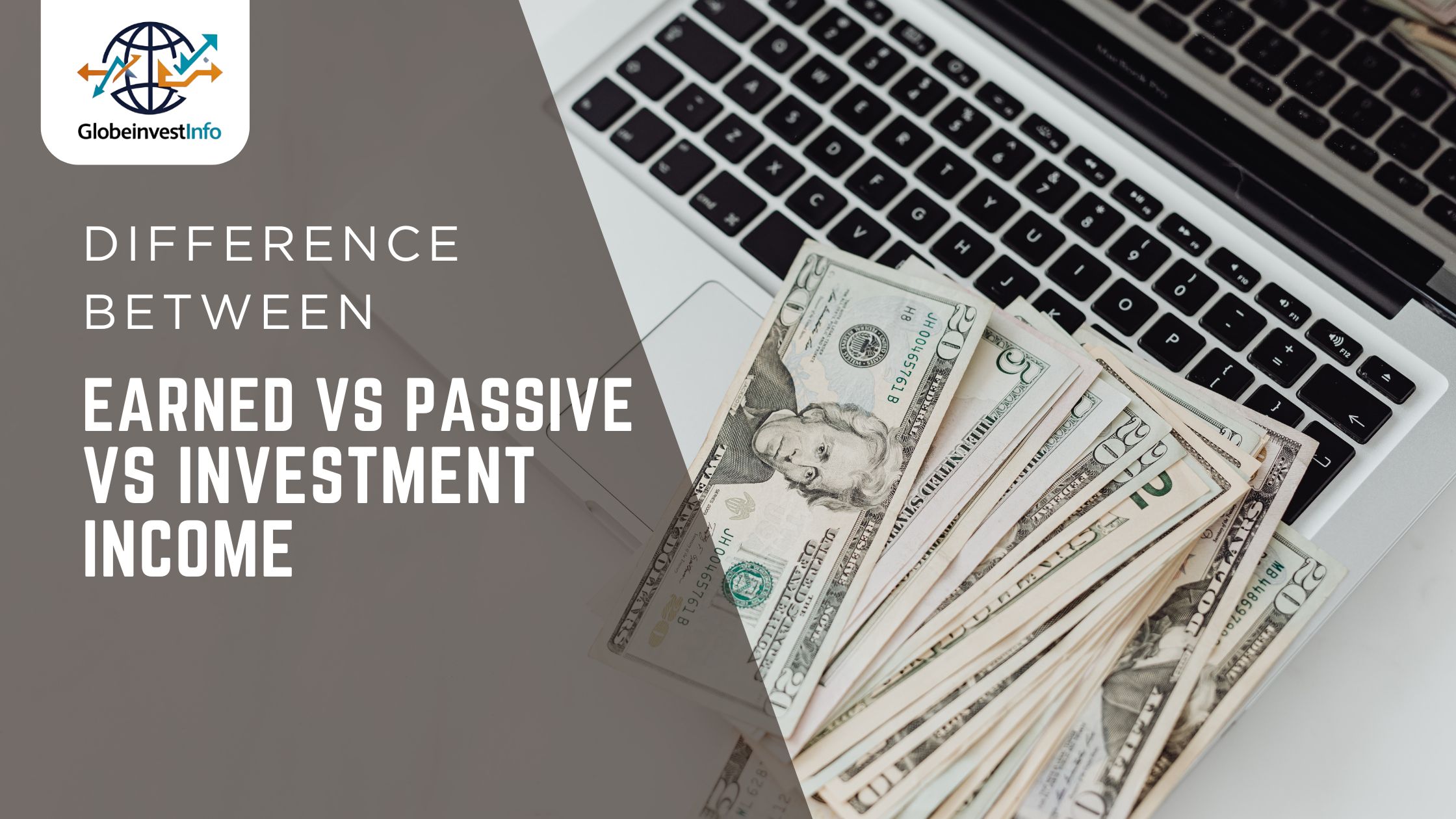Most people want more income. But very few understand how income is actually classified — and that misunderstanding can cost you in taxes, planning, and long-term wealth.
Earned income, passive income, and investment income aren’t just financial terms. They define how you get paid, how much you’re taxed, and how your money grows.
This guide will break it down clearly: what each type means, how they’re different, how they’re taxed, and real-world examples — so you can make smarter financial decisions starting today.
What Is Earned Income?
Earned income is the money you make from actively working.
Examples include:
- Your salary or hourly wages from a job (W-2 income)
- Freelance or contractor work (1099 income)
- Tips and commissions
- Business income from services you perform
If you trade your time or labor for money — it’s earned income.
Tax Treatment:
- Subject to ordinary income tax rates
- Also subject to payroll taxes (Social Security, Medicare) in most countries
- Often the most heavily taxed form of income
What Is Passive Income?
Passive income is money earned from assets or activities where you’re not actively involved on a day-to-day basis.
Common examples:
- Rental income from real estate
- Royalties from books or intellectual property
- Earnings from automated digital businesses
- Some limited partnerships
But it’s not always simple:
The IRS defines passive income strictly. For example, owning a business where you’re not materially involved could count, but dividends and interest are not passive income (they fall under investment income).
Tax Treatment:
- Often taxed at ordinary rates, but not always
- Not subject to payroll taxes
- Passive activity losses may be limited by IRS rules
What Is Investment Income?
Investment income, also known as portfolio income, comes from financial investments.
Includes:
- Stock dividends
- Interest from savings or bonds
- Capital gains from selling assets (stocks, ETFs, property)
- Mutual fund distributions
This income comes from money you’ve put into financial instruments — not your labor or a business you run.
Tax Treatment:
- Dividends may be taxed at lower qualified rates (in the U.S., 0%, 15%, or 20%)
- Capital gains depend on holding period (short-term vs. long-term)
- Often more tax-efficient than earned income
Differences: Earned vs. Passive vs. Investment Income
Here’s a simple breakdown in a comparison table:
| Feature | Earned Income | Passive Income | Investment Income |
|---|---|---|---|
| Requires active work? | Yes | No | No |
| Examples | Salary, freelance | Rentals, royalties | Dividends, capital gains |
| Subject to payroll tax? | Yes | No | No |
| IRS classification | Active income | Passive activity | Portfolio income |
| Tax efficiency | Low | Medium | High (when optimized) |
| Wealth-building potential | Limited (time-based) | Scalable over time | High with compounding |
Why It Matters: Taxes, Wealth, and Freedom
Understanding income types helps you:
1. Pay Less Tax (Legally)
- Earned income gets hit hardest
- Passive and investment income can be structured more efficiently
- Tax planning starts with income classification
2. Build Long-Term Wealth
- Earned income often stops if you stop working
- Passive and investment income can continue without your effort
3. Plan for Financial Independence
- Financial independence requires income you don’t actively work for
- Most people shift focus from earned to investment income over time
Also read: Most People Regret Skipping This Retirement Step — Don’t Be One of Them
Examples of Each Income Type in Real Life
Earned Income Example:
A freelance web developer charges clients $1,000 per website. She trades time for money. That’s earned income.
Passive Income Example:
A landlord rents out a duplex and collects monthly payments. He hires a property manager. That’s passive income.
Investment Income Example:
An investor buys Apple stock and earns dividends. She sells for a profit five years later. That’s investment income.
Frequently Asked Questions (FAQ)
What is considered earned income?
Earned income includes wages, salaries, tips, commissions, freelance payments, and business income from services you personally perform.
Is rental income passive or investment income?
Rental income is generally classified as passive income unless you’re a real estate professional or actively involved in property operations.
Is investment income the same as passive income?
No. Investment income includes dividends, capital gains, and interest. Passive income comes from business or rental activity with minimal involvement.
Which type of income is taxed the most?
Earned income is usually taxed the most due to payroll taxes and higher income brackets. Investment income may qualify for lower tax rates.
How do I classify my income type?
Income is classified based on how it’s earned. Active work = earned income. Limited involvement = passive income. Income from stocks or bonds = investment income.
Are dividends passive or investment income?
Dividends are considered investment income (also called portfolio income), not passive income under IRS rules.
Can you live off investment income?
Yes. Many retirees and financially independent individuals fund their lifestyle using dividends and capital gains from investments.
Is royalty income passive or investment?
Royalties from intellectual property are usually considered passive income. However, some countries may treat them differently for tax purposes.
How are capital gains taxed?
Short-term gains (held <1 year) are taxed as regular income. Long-term gains (held >1 year) are taxed at reduced rates.
Do I pay payroll taxes on passive or investment income?
No. Payroll taxes generally apply only to earned income from employment or self-employment.
Conclusion & Next Steps
Understanding the difference between earned, passive, and investment income isn’t just academic — it’s practical. It affects how much you keep after taxes, how fast your wealth grows, and how soon you reach financial independence.
Most people start with earned income. Smart planning shifts income into passive or investment streams over time.
Next Step:
Start tracking where your money comes from. Then, explore ways to convert more of your time-based income into income that grows without your direct effort.
Have questions or want more examples?
Leave a comment below or share this article with someone trying to make smarter money moves.
Globe Invest Info helps readers break down finance in plain terms. If you’re building wealth, start with clarity — and choose income streams that work for you.

David Rooy is a finance writer and market analyst specializing in business, investing, and market news. He delivers clear, actionable insights to help readers stay informed and make smarter financial decisions.

